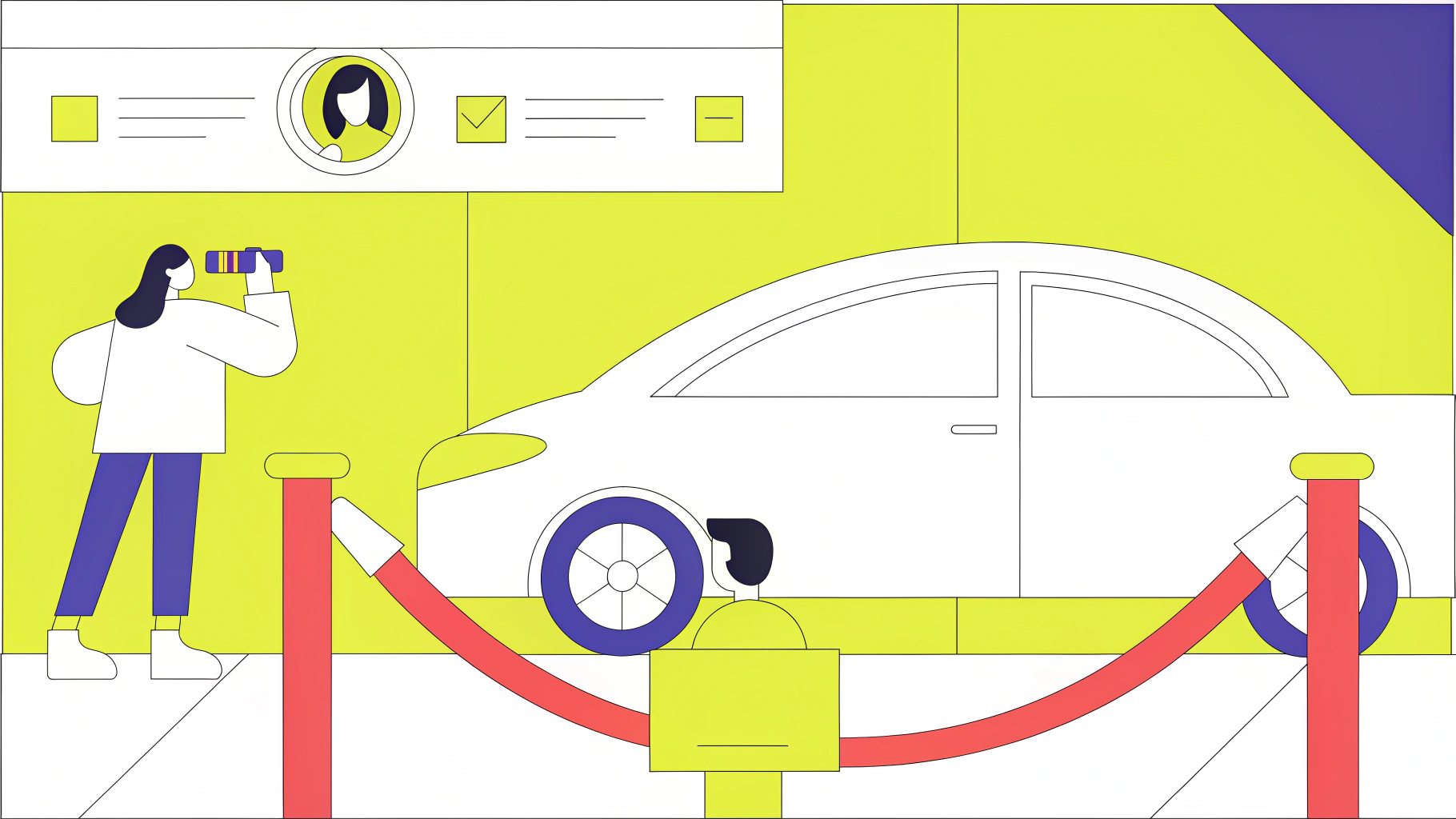Overview
Micro-influencers play a pivotal role in automotive marketing, primarily due to their authenticity and capacity to engage niche audiences. This engagement leads to significantly higher conversion rates compared to traditional advertising methods.
Automotive brands that collaborate with micro-influencers have reported substantial increases in dealership inquiries and sales. This trend underscores their effectiveness in reaching targeted consumers who place greater trust in peer recommendations over corporate messaging.
Clearly, the integration of micro-influencers into marketing strategies is not just beneficial; it is essential for brands aiming to connect meaningfully with their audience.
Introduction
Micro-influencers are revolutionizing the automotive marketing landscape, presenting a compelling alternative to traditional advertising methods. With their authentic voices and deeply engaged audiences, these social media users—boasting followings between 10,000 and 100,000—can drive significant visibility and conversion rates for automotive brands.
However, as competition intensifies, how can companies effectively harness the power of micro-influencers to foster genuine connections and boost sales?
This guide delves into the strategies for:
- Selecting micro-influencers
- Engaging micro-influencers
- Measuring the impact of micro-influencer partnerships
in the automotive sector, offering valuable insights for brands eager to thrive in this dynamic market.
Define Micro-Influencers and Their Importance in Automotive Marketing
Micro-influencers—defined as social media users with followings between 10,000 and 100,000—are increasingly recognized for their . In the , working with plays a crucial role in enhancing product visibility and engagement. Their smaller yet highly engaged audiences often yield conversion rates that are 2-3 times higher than traditional advertising methods.
For instance, automotive manufacturers that are in automotive have experienced notable increases in dealership inquiries and test-drive appointments. This showcases their effectiveness in and enhancing awareness. Significantly, 68% of vehicle purchasers rely on peer suggestions more than company messaging, highlighting the trustworthiness of micro-influencers. Additionally, can boost dealership foot traffic by up to 20%, reflecting a broader trend where consumers, particularly younger demographics, prefer genuine endorsements over polished advertisements.
This highlights the importance of working with micro-influencers in automotive as vital partners in navigating the competitive landscape, especially when their lifestyles and values correspond with the companies they represent. Fresh Content Society exemplifies this approach, achieving over 6 million video views and an impressive for clients like LINE-X. This showcases the transformative power of . Their expertise in further enhances audience engagement and organic growth, making them a valuable partner for brands—whether small startups or large enterprises—looking to leverage micro-influencers effectively.

Identify and Select the Right Micro-Influencers for Your Brand
To effectively identify and select the right for your , follow these essential steps:
- : Begin with a clear understanding of the demographics, interests, and behaviors of your ideal customers. This foundational knowledge will empower you to find influencers whose followers align with your target market.
- Research Potential Key Figures: Leverage social media platforms and marketing tools to uncover micro-influencers within the . Focus on those who consistently share content related to cars, automotive trends, or relevant topics.
- Evaluate : Scrutinize the engagement rates of . A high ratio of likes, comments, and shares relative to their follower count signifies a robust connection with their audience, indicating potential effectiveness for your business.
- : Assess the quality of the creator’s content to ensure it aligns with your . Authenticity is crucial; their posts should feel genuine and relatable to foster trust among their followers.
- Check for Alignment: Confirm that the individual’s style and messaging resonate with your company’s ethos. Examine their previous partnerships to evaluate public reception and alignment with your narrative.
- Reach Out: After compiling a shortlist of suitable influencers, initiate contact to gauge their interest in collaboration. Discuss your campaign objectives and assess how effectively they correspond with the content approach of the collaborator, ensuring a mutually beneficial partnership.
By following these steps, automotive companies can effectively engage in working with micro-influencers in automotive, who not only enhance visibility but also with targeted audiences.

Engage and Build Relationships with Micro-Influencers
To effectively engage and build relationships with , consider the following strategies:
- Personalize Your Outreach: Tailor your messages to each influencer by referencing specific content they’ve created that aligns with your identity. Clearly articulate how a partnership can be mutually beneficial, making them feel valued from the outset.
- Offer Value Beyond Compensation: Go beyond monetary incentives by providing influencers with , invitations to events, or opportunities for co-creation. This approach fosters a partnership and enhances their investment in your brand. As noted by clients like Bob B. from Old World Industries, helped elevate their significantly, showcasing the value of such partnerships.
- Communicate Clearly: Establish open lines of communication throughout the collaboration. Clearly define expectations, project goals, and deliverables to ensure both parties are aligned, which helps prevent misunderstandings and builds trust.
- Foster Collaboration: Encourage influencers to contribute their ideas and insights during the campaign. This collaborative spirit can lead to more authentic content that resonates with their audience, enhancing the effectiveness of your marketing efforts. Fresh Content Society emphasizes this approach, ensuring that influencers feel empowered in their creative process.
- Show Appreciation: Acknowledge and celebrate the contributor’s efforts. Share their content on your brand’s channels, provide constructive feedback, and express gratitude for their collaboration. This acknowledgment strengthens the relationship and encourages ongoing engagement. As Zach S. from Stern Pinball stated, the working relationship with Fresh Content Society exemplifies first-class service, highlighting the importance of appreciation in .
- Build : Focus on cultivating rather than one-off campaigns. This approach can result in more authentic endorsements and a stronger bond with their audience over time, ultimately improving loyalty and visibility. Cara K. from Coleman Powersports noted that partnering with Fresh Content Society was a pivotal decision for their social media strategy, reinforcing the value of sustained collaborations.
Including statistics, such as the fact that 22.4% of companies are allocating 10-20% of their marketing budget into marketing through social media personalities, highlights the increasing significance of this strategy in the automotive sector. Furthermore, utilizing automation tools such as Later Influence can enhance outreach initiatives, enabling companies to effectively engage in working with micro-influencers in automotive while preserving a personal touch. As Alana Willis notes, “Mastering influencer outreach can help your collaboration start off on the right foot for and lasting relationships with creators.” Emphasizing authenticity is also crucial, as influencers prefer to collaborate with brands that respect their creativity and individuality. Fresh Content Society’s innovative social-first content creation strategies further enhance these efforts, ensuring impactful engagement with target audiences.
Measure and Analyze the Impact of Micro-Influencer Campaigns
To effectively measure and analyze the impact of your in the , follow these strategic steps:
-
Set Clear Objectives: Begin by defining what success looks like for your initiative. Objectives may encompass increasing brand awareness, boosting , or driving sales conversions.
-
: Monitor essential KPIs to gauge campaign effectiveness, including:
- Engagement rates (likes, comments, shares)
- Reach and impressions
- Website traffic generated from influencer posts
- Conversion rates (sales, sign-ups)
-
Use : Leverage to gather data on campaign performance. Platforms like Google Analytics, Hootsuite, and Sprout Social offer valuable insights into user interactions and overall effectiveness, aligning with .
-
Analyze Audience Feedback: Pay close attention to comments and feedback from the content creator’s audience. This qualitative information reveals how the initiative resonated with viewers and highlights areas for enhancement, fostering trust and community over time.
-
Adjust Strategies Based on Insights: Utilize the data collected to refine your . Identify successful elements and areas needing adjustment to enhance future initiatives. Fresh Content Society emphasizes the importance of to ensure sustained growth.
-
Report Results: Compile a comprehensive report summarizing the initiative’s performance. Sharing this with stakeholders demonstrates the value of influencer partnerships and guides future marketing decisions. Brands collaborating with Fresh Content Society often experience measurable engagement and follower growth within 60-90 days, showcasing the effectiveness of these strategies.
In the automotive sector, working with micro-influencers in automotive has led to substantial outcomes. For instance, campaigns that meticulously tracked KPIs led to enhanced visibility and engagement, underscoring the significance of a . By implementing these strategies, brands can optimize their influencer marketing efforts and achieve measurable success while nurturing long-term relationships with their audience.

Conclusion
Micro-influencers have established themselves as a formidable force in automotive marketing, presenting brands with a distinctive opportunity to connect authentically with their target audiences. Their smaller yet more engaged followings empower automotive companies to enhance visibility and drive conversions in ways that traditional advertising often falls short. By harnessing the trust and relatability of micro-influencers, brands can adeptly navigate the competitive landscape and cultivate genuine connections with potential customers.
This article has highlighted key strategies for collaborating with micro-influencers, emphasizing the necessity of:
- Defining target audiences
- Assessing engagement rates
- Nurturing long-term relationships
Identifying the right influencers and fostering collaboration is crucial for crafting impactful campaigns that resonate with consumers. Furthermore, measuring the success of these initiatives through clear objectives and analytics tools ensures that brands can refine their strategies for ongoing improvement.
The importance of micro-influencers in the automotive industry is undeniable. As consumer behavior increasingly favors authentic endorsements, brands must embrace these partnerships to maintain relevance and competitiveness. By investing in micro-influencer strategies, automotive companies can not only amplify their marketing efforts but also foster enduring relationships with their audiences, driving both engagement and sales in an ever-evolving market.
Frequently Asked Questions
What are micro-influencers?
Micro-influencers are social media users with followings between 10,000 and 100,000, known for their authenticity and relatability within niche markets.
Why are micro-influencers important in automotive marketing?
Micro-influencers play a crucial role in enhancing product visibility and engagement, often yielding conversion rates that are 2-3 times higher than traditional advertising methods.
How do micro-influencers impact dealership inquiries and test-drive appointments?
Automotive manufacturers working with micro-influencers have seen notable increases in dealership inquiries and test-drive appointments, demonstrating their effectiveness in boosting sales and awareness.
What percentage of vehicle purchasers rely on peer suggestions over company messaging?
68% of vehicle purchasers rely on peer suggestions more than company messaging, highlighting the trustworthiness of micro-influencers.
How can influencer-driven campaigns affect dealership foot traffic?
Influencer-driven campaigns can boost dealership foot traffic by up to 20%, particularly among consumers who prefer genuine endorsements over polished advertisements.
What is the significance of aligning micro-influencers’ lifestyles and values with brands?
Aligning micro-influencers’ lifestyles and values with the companies they represent is vital for navigating the competitive landscape in automotive marketing.
Can you provide an example of a successful micro-influencer campaign in the automotive industry?
Fresh Content Society is an example, achieving over 6 million video views and a 20X return on ad spend for clients like LINE-X, showcasing the effectiveness of tailored social media strategies.
What additional benefits do micro-influencers provide to brands?
Micro-influencers enhance audience engagement and organic growth through their expertise in community management, making them valuable partners for brands of all sizes.

